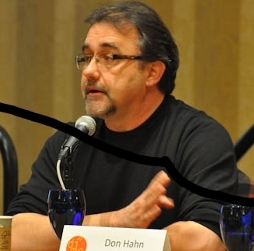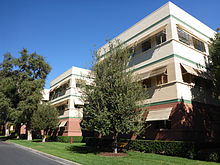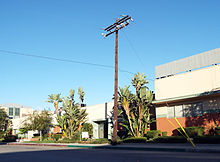
Mulan is a 1998 American animated musical coming-of-age action-adventure film produced by Walt Disney Feature Animation for Walt Disney Pictures. Based on the Chinese legend of Hua Mulan, the film was directed by Barry Cook and Tony Bancroft and produced by Pam Coats, from a screenplay by Rita Hsiao, Chris Sanders, Philip LaZebnik, and the writing team of Raymond Singer and Eugenia Bostwick-Singer, and a story by Robert D. San Souci. Ming-Na Wen, Eddie Murphy, Miguel Ferrer, and BD Wong star in the English version as Mulan, Mushu, Shan Yu, and Captain Li Shang, respectively, while Jackie Chan provided the voice of Li Shang for the Chinese dubs of the film. The film's plot takes place in China during an unspecified Imperial dynasty, where Fa Mulan, daughter of aged warrior Fa Zhou, impersonates a man to take her father's place during a general conscription to counter a Hun invasion.

Aladdin is a 1992 American animated musical fantasy comedy film produced by Walt Disney Feature Animation and released by Walt Disney Pictures. It is based on the Arabic folktale "Aladdin" from One Thousand and One Nights. The film was produced and directed by John Musker and Ron Clements from a screenplay they cowrote with the writing team, Ted Elliott and Terry Rossio. Featuring the voices of Scott Weinger, Robin Williams, Linda Larkin, Jonathan Freeman, Frank Welker, Gilbert Gottfried and Douglas Seale, the film follows the titular Aladdin, an Arabian street urchin who finds a magic lamp containing a genie. With the genie's help, Aladdin disguises as a wealthy prince and tries to impress the Sultan of Agrabah to win the heart of his free-spirited daughter, Princess Jasmine, as the Sultan's evil vizier, Jafar, plots to steal the magic lamp.
Modern animation in the United States from the late 1980s to the early 2000s is frequently referred to as the renaissance age of American animation. During this period, many large American entertainment companies reformed and reinvigorated their animation departments, following the dark age, and the United States had an overall profound effect on animation globally.

The Little Mermaid is a 1989 American animated musical fantasy film produced by Walt Disney Feature Animation in association with Silver Screen Partners IV and released by Walt Disney Pictures. It is loosely based on the 1837 Danish fairy tale of the same name by Hans Christian Andersen. The film was written and directed by John Musker and Ron Clements and produced by Musker and Howard Ashman, who also wrote the film's songs with Alan Menken. Menken also composed the film's score. Featuring the voices of René Auberjonois, Christopher Daniel Barnes, Jodi Benson, Pat Carroll, Paddi Edwards, Buddy Hackett, Jason Marin, Kenneth Mars, Ben Wright and Samuel E. Wright, The Little Mermaid tells the story of a teenage mermaid princess named Ariel, who dreams of becoming human and falls in love with a human prince named Eric, which leads her to make a magic deal with the sea witch, Ursula, to become human and be with him.

Pocahontas is a 1995 American animated musical historical drama film based on the life of Powhatan woman Pocahontas and the arrival of English colonial settlers from the Virginia Company. The film romanticizes Pocahontas's encounter with John Smith and her legendary saving of his life. It was produced by Walt Disney Feature Animation and released by Walt Disney Pictures.

Howard Elliott Ashman was an American playwright, lyricist and stage director. He is most widely known for his work on feature films for Walt Disney Animation Studios, for which Ashman wrote the lyrics and Alan Menken composed the music. Ashman has been credited as being a main driving force behind the Disney Renaissance. His work included songs for Little Shop of Horrors, The Little Mermaid, Beauty and the Beast, and Aladdin. Tim Rice took over to write the rest of the songs for the latter film after Ashman's death in 1991.

Alan Irwin Menken is an American composer, best known for his scores and songs for films produced by Walt Disney Animation Studios and Skydance Animation. Menken's music for The Little Mermaid (1989), Beauty and the Beast (1991), Aladdin (1992), and Pocahontas (1995) has each won him two Academy Awards. He also composed the scores and songs for Little Shop of Horrors (1986), Newsies (1992), The Hunchback of Notre Dame (1996), Hercules (1997), Home on the Range (2004), Enchanted (2007), Tangled (2010), and Disenchanted (2022), among others. His accolades include winning eight Academy Awards — becoming the second most prolific Oscar winner in the music categories after Alfred Newman, a Tony Award, eleven Grammy Awards, seven Golden Globe Awards, and a Daytime Emmy Award. Menken is one of nineteen people to have won an Emmy, a Grammy, an Oscar and a Tony.

Walt Disney Animation Studios (WDAS), sometimes shortened to Disney Animation, is an American animation studio that creates animated features and short films for The Walt Disney Company. The studio's current production logo features a scene from its first synchronized sound cartoon, Steamboat Willie (1928). Founded on October 16, 1923, by brothers Walt Disney and Roy O. Disney, it is the oldest-running animation studio in the world. It is currently organized as a division of Walt Disney Studios and is headquartered at the Roy E. Disney Animation Building at the Walt Disney Studios lot in Burbank, California. Since its foundation, the studio has produced 62 feature films, from Snow White and the Seven Dwarfs (1937) to Wish (2023), and hundreds of short films.
The Computer Animation Production System (CAPS) was a proprietary collection of software, scanning camera systems, servers, networked computer workstations, and custom desks developed by The Walt Disney Company and Pixar in the late 1980s. Although outmoded by the mid-2000s, it succeeded in reducing labor costs for ink and paint and post-production processes of traditionally animated feature films produced by Walt Disney Animation Studios (WDAS). It also provided an entirely new palette of digital tools to the animation filmmakers.

Ronald Francis Clements is an American animator, film director, screenwriter, and film producer. He often collaborates with fellow director John Musker and is best known for writing and directing the Disney films The Great Mouse Detective (1986), The Little Mermaid (1989), Aladdin (1992), Hercules (1997), Treasure Planet (2002), The Princess and the Frog (2009), and Moana (2016).
Will Finn is an American animator, voice actor, storyboard artist, and director.

Classic Disney: 60 Years of Musical Magic is a five-volume compilation series, each containing 25 songs compiled from Disneyland and Walt Disney World, various Disney films in animation and live-action, and the Walt Disney anthology television series. Each volume was released individually on CD and cassette between 1995 and 1998. Volume I was released on March 28, 1995, Volume II on September 12, 1995, Volume III on July 2, 1996, Volume IV on July 15, 1997 and Volume V on September 22, 1998. In 2000, a box set was released containing volumes 1 - 3, followed by a box set containing volumes 1 - 4 in 2001, Finally, a box set containing all five volumes packaged in a slipcase was released by Walt Disney Records in Australia, Japan, North America and Europe in 2003.

Donald Paul Hahn is an American film producer who is credited with producing some of the most successful animated films in recent history, including Disney’s Beauty and the Beast and The Lion King.

Waking Sleeping Beauty is a 2009 American documentary film directed by Disney film producer Don Hahn and produced by Hahn and former Disney executive Peter Schneider. The film documents the history of Walt Disney Feature Animation from 1984 to 1994, covering the rise of a period referred to as the Disney Renaissance.
Creative Capers Entertainment is an American animation studio founded by Terry and Sue Shakespeare with David Molina in 1989. Based in Altadena, California, it specializes in Flash and hand-drawn animation in various feature films, television series, commercials, CD-ROMs and video games.
Wonderful World of Animation is a nighttime show at Disney's Hollywood Studios. The show is a celebration of all Disney animation, beginning with Mickey Mouse. It premiered on May 1, 2019, as part of the park's 30th anniversary celebration, replacing Disney Movie Magic.
Wondrous Journeys was a projection mapping and fireworks show at Disneyland that debuted on January 27, 2023. It premiered alongside World of Color: One as part of the Disney 100 Years of Wonder celebration to commemorate the centennial of The Walt Disney Company. The show contains a large assortment of songs and characters from the entirety of the Walt Disney Animation Studios feature film canon.















